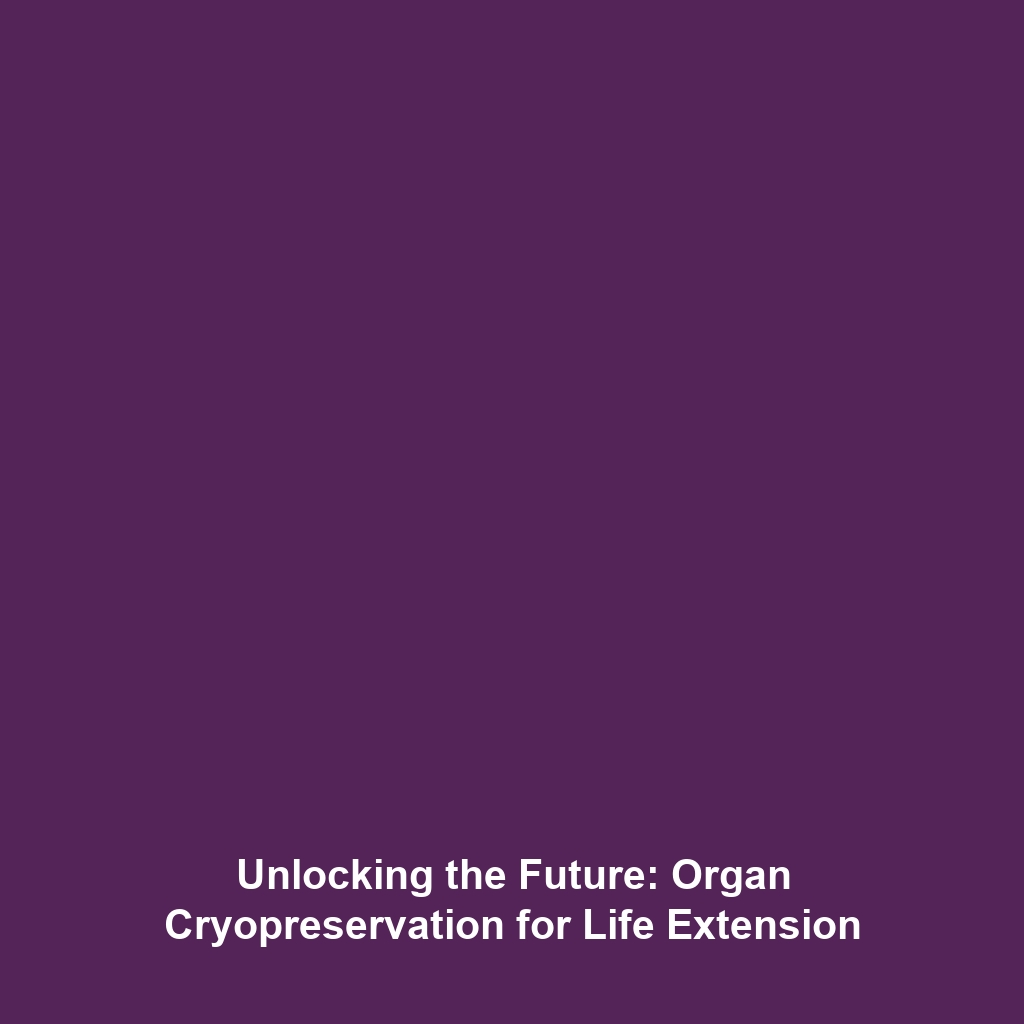The Purpose of Cryonics in Life Extension
Introduction
Cryonics, a field that intersects science and the aspirations of prolonging human life, aims to preserve individuals in a state of suspended animation. By doing so, it seeks to extend lives until such time advanced medical technologies can address aging and diseases deemed incurable. The significance of cryonics lies not only in its potential to forefront a scientific revolution but also in the ethical and philosophical discussions it ignites surrounding mortality and the future of human health.
Key Concepts
Principles of Cryonics
Cryonics operates on several core principles that guide its implementation:
- Suspended Animation: The primary purpose of cryonics is to halt the biological processes that lead to cell death.
- Vitrification: This process involves converting bodily fluids to a glass-like state to prevent ice crystal formation, which can cause cellular damage.
- Restoration Technology: The belief that future medical advancements could revive individuals after preservation.
Applications and Real-World Uses
The applications of cryonics extend beyond theoretical considerations and into tangible practices. Some significant realizations of cryonics include:
- Personal Preservation: Individuals can opt for cryonic preservation post-mortem as a testament to their hope for future medical advances.
- Research and Development: Cryonics facilities are involved in research aimed at improving preservation techniques, ultimately contributing to the fields of medicine and biotechnology.
Current Challenges
Despite the intriguing possibilities presented by cryonics, several challenges persist:
- Ethical Considerations: The morality of delaying death raises questions regarding quality of life and societal impacts.
- Technical Limitations: Current technology cannot guarantee recovery after long-term preservation, and the science behind resurrection remains unproven.
- Legal and Financial Issues: The costs of cryonics procedures can be prohibitive and are often not covered by insurance.
Future Research and Innovations
Looking toward the future, several innovations in cryonics show promise:
- Advanced Preservation Methods: Research focusing on developing new vitrification solutions may enhance cellular preservation.
- Regenerative Medicine: The convergence of cryonics with stem cell research and tissue engineering could provide breakthroughs in restoring health.
- Artificial Intelligence: AI could play a role in improving the monitoring and assessment of preservation techniques.
Conclusion
Cryonics presents an ambitious approach to extending human life by preserving individuals until future medical technologies can address currently incurable diseases and aging. As research progresses and ethical discussions continue, the significance of cryonics in the broader narrative of life extension cannot be understated. For those intrigued by the potential of cryonics, further exploration of related topics in biotechnology and medical ethics is advisable.


